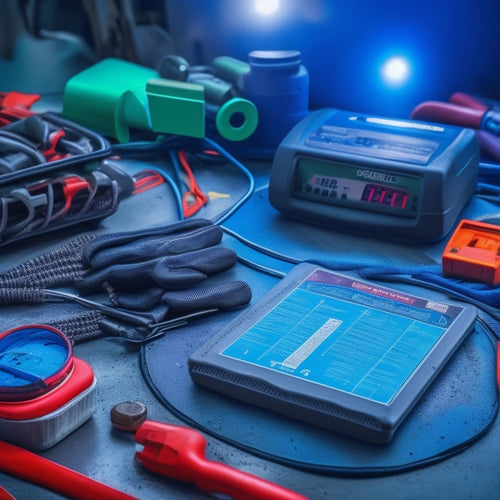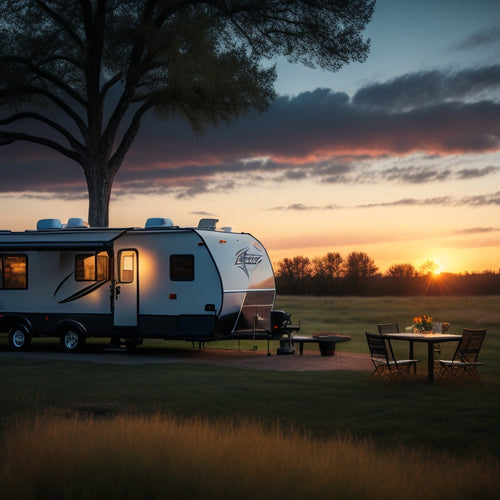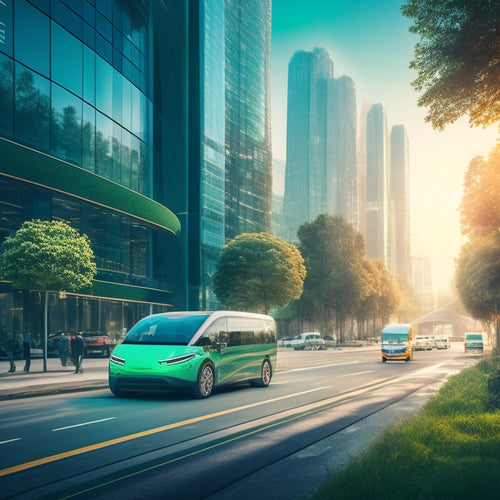
5 Tips for Seniors to Convert Their Bikes
Share
Converting your bike to an e-bike can be a game-changer for seniors who want to regain cycling freedom and independence. Start by evaluating your current bike, considering its history, your rider goals, and areas causing discomfort. Then, research and compare different e-bike kits, determining your budget priorities and allocation. Before converting, prepare by checking your bike's condition, identifying safety concerns, and creating a budget plan. Overcome technical challenges by confirming battery compatibility and using online resources. With these tips, you'll be well on your way to a comfortable and enjoyable ride - and there's more to explore to ensure a seamless conversion.
Key Takeaways
• Assess your current bike's history, rider goals, and areas of discomfort to determine necessary modifications for a comfortable ride.
• Research and compare different e-bike kits, considering motor type, battery life, and gear systems to find the best fit for your needs.
• Prepare your bike for conversion by checking for worn-out parts, rust, or damage, and budgeting for the conversion process.
• Ensure battery compatibility with your chosen kit and consider upgrading to a high-capacity battery for extended rides.
• Don't be afraid to seek professional assistance if you're not comfortable with the conversion process, and utilize online resources for guidance and support.
Assessing Your Current Bike
Take a hard look at your trusty bike, the one that's been collecting dust in the garage, and ask yourself what's holding you back from riding it comfortably. Perhaps it's the aching back, the numb hands, or the struggle to breathe after a short ride. Whatever the reason, it's time to assess your current bike and identify the obstacles standing between you and a comfortable ride.
Consider your bike's history - when did you buy it, and how has it served you over the years? Think about your rider goals - do you want to ride with friends, explore new trails, or simply enjoy a leisurely cruise around the neighborhood?
As you examine your bike, note any areas that cause discomfort or pain. Are the handlebars too low, the seat too hard, or the pedals too far apart? Make a mental (or written) list of the modifications you'd like to make to create a more comfortable ride.
Choosing the Right Kit
With your bike's limitations and your rider goals in mind, you're now ready to choose a conversion kit that addresses your specific needs and preferences. This is an essential step, as the right kit can make all the difference in your riding experience.
When comparing kits, consider the following factors:
-
Kit Comparison: Research different kits and compare their features, such as motor type, battery life, and gear systems. Look for reviews and testimonials from other riders to get a sense of each kit's performance and reliability.
-
Budget Priorities: Determine how much you're willing to spend and allocate your budget accordingly. Consider the cost of the kit, installation fees, and any additional accessories you may need.
-
Customization Options: Think about the level of customization you need. Do you want to be able to adjust the gear ratio or customize the display? Look for kits that offer the level of customization that's right for you.
Preparing for the Conversion
What's the current state of your bike, and are you prepared to transform it into an e-bike? Before diving into the conversion process, take a step back and assess your bike's condition. Check for any worn-out parts, rust, or damage that could impact the conversion process or compromise your safety on the road. Identify any safety concerns, such as faulty brakes or loose handlebars, and prioritize addressing them before proceeding.
Next, create a budget plan for the conversion. Determine how much you're willing to spend on the kit, tools, and any additional components you might need. Consider the cost of any professional assistance you might require, and factor that into your budget as well. Having a clear understanding of your financial constraints will help you make informed decisions throughout the conversion process.
Overcoming Technical Challenges
One major hurdle you'll likely face during the conversion process is figuring out how to integrate the e-bike kit's electrical components with your bike's existing mechanical systems. This can be a challenging task, especially if you're not tech-savvy. However, with some patience and the right guidance, you can overcome these technical challenges.
Here are a few tips to help you navigate the process:
-
Battery Upgrades: Make sure you choose a battery that's compatible with your e-bike kit and bike's electrical system. Consider upgrading to a high-capacity battery for longer rides.
-
Wiring Hacks: Use wiring diagrams to make certain you're connecting the electrical components correctly. You can also use wiring hacks like using connectors or soldering wires to make the process easier.
-
Online Resources: Take advantage of online forums, tutorials, and YouTube videos that provide step-by-step guides on e-bike conversions. These resources can be a lifesaver when you're stuck on a particular issue.
Enjoying Your New Ride
You've finally overcome the technical hurdles and are now ready to enjoy the fruits of your labor - it's time to take your new e-bike out for a spin! You've earned it! As you pedal away, you'll experience a sense of cycling freedom that's hard to match.
The wind in your hair, the sun on your face, and the thrill of adventure calling your name.
Imagine taking leisurely road trips to nearby towns or scenic routes, exploring hidden gems and enjoying the scenery. Your e-bike can take you there, effortlessly.
You'll feel like a kid again, with the wind in your hair and a grin on your face. Take a ride along the coast, breathe in the salty air, and soak up the sunshine.
Or, explore quaint towns, visit local cafes, and indulge in your favorite treats.
Frequently Asked Questions
Can I Convert My Bike if I Have Arthritis or Mobility Issues?
Yes, you can convert your bike even with arthritis or mobility issues! Look for adaptive cycling features, accessible design, and senior-friendly components that cater to your needs, ensuring a comfortable and enjoyable ride.
How Long Does a Typical Bike Conversion Take to Complete?
"Ha! You think you're getting a quick fix, right? Wrong! A bike conversion's timeline depends on you, your skills, and the DIY challenges you'll face. Be realistic, it'll take a few weekends, maybe more, to get it just right."
Will Converting My Bike Affect Its Resale Value?
When you convert your bike, you'll impact its resale value, depending on market demand and your resale strategy. Assess the bike's original specs, conversion cost, and potential depreciation to determine its new value, ensuring a fair sale.
Can I Convert an Electric Bike or Only Traditional Bicycles?
Wondering if your e-bike can join the conversion party? The suspense is killing you! Rest assured, most e-bikes are compatible with modifications, but make sure to check your bike's specs before diving into the world of bike modification.
Are There Local Bike Conversion Classes or Workshops Available?
You can search online for local bike conversion classes or workshops, which may offer community outreach programs and senior discounts, providing an affordable and hands-on learning experience tailored to your needs.
Related Posts
-

5 Essential Car Battery Maintenance Tips
You can extend your car battery's lifespan and prevent unexpected breakdowns by following five essential maintenance ...
-

7 Best RV Battery Charging Panels for Your Adventures
You're searching for reliable and efficient solar charging solutions to power your RV battery on the go. Explore top-...
-

5 Best Online Stores for Green Vehicle Solutions
You're on the hunt for an eco-friendly ride, and online stores are a great place to start. You'll find top retailers ...


